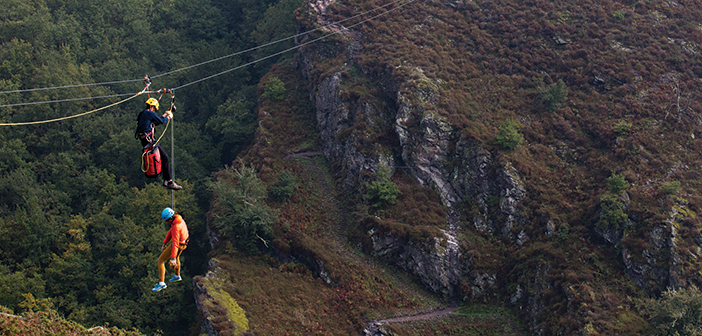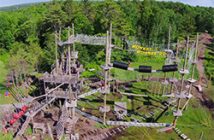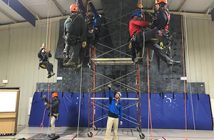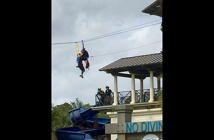Next, rescuers must determine if the patient is “under tension.” If they are stranded on a line, they most likely are under the tension of their own body weight on a lanyard or pulley. If this is the case, they will have to be unweighted and transferred to a rescue system the rescuer puts in place; therefore, operators must have the ability—i.e., a hoist or other suitable equipment—to both raise and lower any guest.
No matter what gear you use, it should be pre-rigged to eliminate or reduce user error, as well as to speed your response time. Williams says you’ll need, at the very minimum, the capability to do a short haul to unweight a victim, and the capacity to lower them. Or in the concise words of McCurley: reach, release, and evacuate a patient from any predicament.
Without adequate training, one conundrum that can occur, says McCurley, “is that local site operators are often not trained to perform rescue, but on the other hand, local emergency teams are often not trained in the park’s elements. This can result in quite a knowledge gap during the rescue effort.”
In addition, he notes, “Adventure parks are typically not designed for easy access, and are often remote. The elements are designed to be challenging, difficult, or sometimes even adrenaline-producing—all of which pose unique rescue challenges.”
As a result, it’s often not feasible to simply let the local emergency response teams handle a rescue by themselves. “We suggest that if there’s a rescue scenario, at least have your in-house emergency response team there,” says Cylvick. “They would assess and triage the situation and decide if further assistance is needed.” And it’s up to the operator if their policy includes always calling emergency rescue.
ACCESSING THE PATIENT
Once it’s been determined that a rescue is needed, you can determine your method of accessing the patient.
Approach a stranded person the way you would approach any patient: make eye contact, immediately evaluate for injury and consciousness level, and if any life-threatening injuries are present affecting consciousness, airway or bleeding, put your Emergency Response Plan into effect, including calling 911.
“As a first responder/rescuer, your job is to extricate a patient, and communicate to the rest of the rescue team what you’re seeing,” adds Cylvick. “It’s difficult to multi-task in a high angle rescue situation. The rescuers will get them to the bottom of the tower, where there could be an EMS team, for example.”
“You’re generally very high off the ground and over rough terrain, so you’re going to need a unique way of evacuating people. If your choice is to lower from the cable to the ground, it’s going to be a long distance,” says Cylvick. “Generally you have to use the cable that the [stranded customers]are on to evacuate them to the bottom.”
With an assisted rescue, operators will get a system in position and secure, assist, and coach a patient through a rescue using a spectrum of belays or a combination of methods, says Williams, but a rescuer still has to get into a “work position,” where he or she can be hands-free. The benefits of assisted access in this manner are that rescuers can directly communicate with the patient, ensure that all rigging is correct, and maintain eye contact for reassurance. Once the patient has been accessed, in accordance with the rescue plan, the evacuation can begin.
THE EVACUATION
“Once that system is in place, then you focus on the evacuation side of it,” says Williams. “In an adventure park setting, they’re going to be most likely in suspension, hanging from a pulley in the middle of the zip line.”
At that point, there are several options. It may be possible to progress the guest along the cable or tow the guest to the next tower. If not, the rescuer must install a system that has the capability to raise and unweight them from the attachment point, and then to lower them—with control—to a safe landing zone.
If the guest has to be lowered to the ground due to a medical emergency, a stuck trolley, or other failure, this may be done either by the rescuer who accesses and installs the system, or by a ground team.
However, none of these procedures matter if no plan is in place. So start with an assessment of all the things that could go wrong, develop a plan to address the possible emergencies, train to deal with them, and pray you’ll never need to—but be ready when you must. That’s an operator’s responsibility to both employees and guests.







